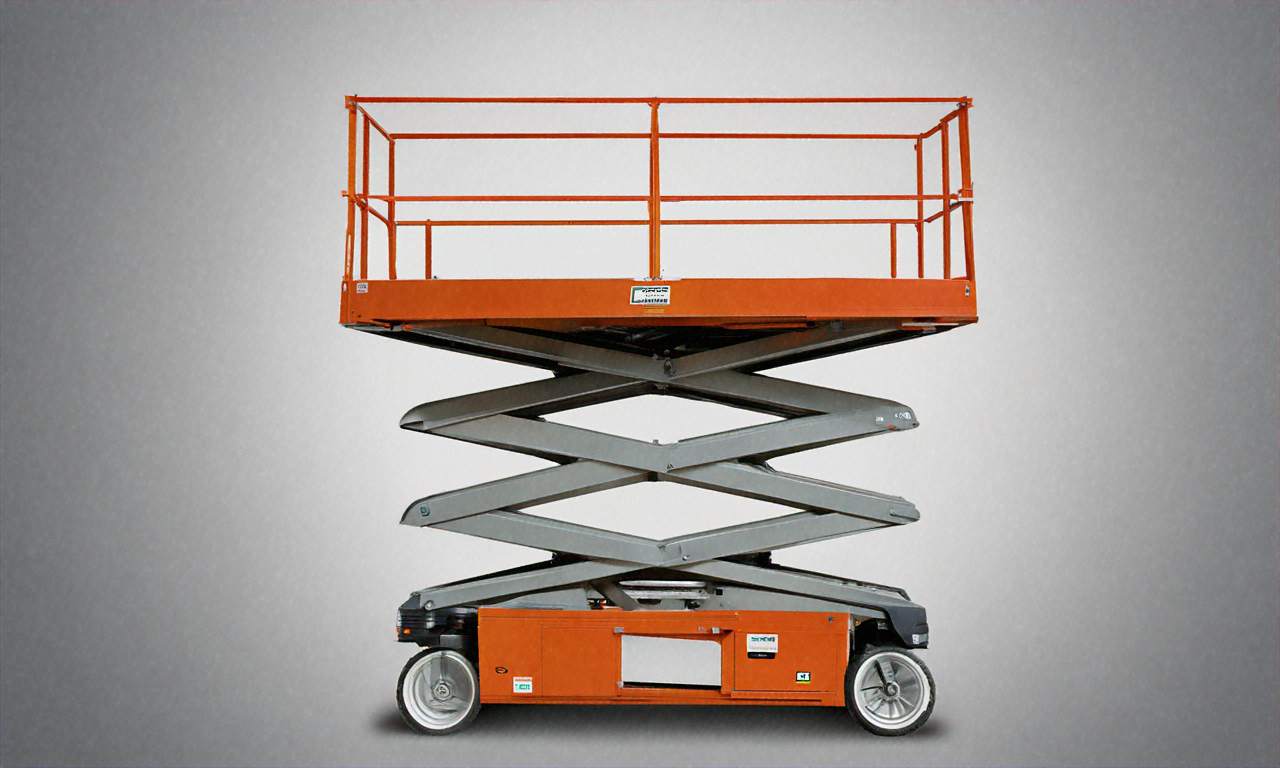Scissor Lift Guide
A scissor lift is a type of aerial work platform that uses a crisscross "X" pattern of folding supports to raise and lower a platform, providing a safe way to lift workers and equipment to elevated areas. These are commonly used in construction, retail, and manufacturing for tasks like maintenance and installation, with various types available such as hydraulic, electric, and rough terrain models depending on the specific job requirements

Scissor lifts have become indispensable tools across various industries, offering reliable vertical mobility for workers and materials. These versatile machines provide stable platforms that can reach significant heights while maintaining safety standards required for elevated work operations.
What is scissor lift used for?
Scissor lifts serve multiple purposes across different industries and applications. In construction, they enable workers to access high areas for building installation, painting, and structural work. Warehousing operations utilize these lifts for inventory management, allowing staff to reach elevated storage areas safely and efficiently. Maintenance teams rely on scissor lifts for HVAC system repairs, lighting fixture installations, and building upkeep tasks that require stable elevated platforms.
Retail environments frequently employ scissor lifts for store setup, display changes, and overhead maintenance work. Film and event production industries use these lifts for lighting setup, camera positioning, and stage construction. The automotive industry incorporates scissor lifts in manufacturing processes and vehicle maintenance operations where precise vertical positioning is crucial.
Do you need a licence for a scissor lift in the UK?
In the United Kingdom, operating a scissor lift requires proper certification and training, though specific requirements vary based on the lift type and work environment. The Health and Safety Executive (HSE) mandates that operators complete recognized training programs before using mobile elevated work platforms (MEWPs), which include scissor lifts.
Most operators need to obtain certification through accredited training providers who offer courses covering safety procedures, equipment inspection, and operational techniques. The training typically includes both theoretical knowledge and practical hands-on experience. Employers are responsible for ensuring their workers receive appropriate training and maintain current certifications.
Certain work environments may require additional qualifications or site-specific training beyond basic MEWP certification. Regular refresher training is often recommended to maintain competency and stay updated on safety regulations and best practices.
What’s the difference between a scissor lift and a boom lift?
Scissor lifts and boom lifts serve similar purposes but operate differently and excel in distinct applications. The primary difference lies in their movement capabilities and reach characteristics. Scissor lifts move exclusively in vertical directions, providing straight up-and-down motion with a stable, spacious platform suitable for multiple workers and equipment.
Boom lifts, also known as cherry pickers or aerial lifts, feature articulating or telescoping arms that allow horizontal reach and positioning around obstacles. This flexibility makes boom lifts ideal for accessing areas that require reaching over or around structures, while scissor lifts excel in situations requiring direct vertical access with maximum platform stability.
Platform size represents another key distinction. Scissor lifts typically offer larger work platforms that can accommodate multiple workers and tools, making them suitable for tasks requiring extended work periods or team collaboration. Boom lifts usually feature smaller baskets designed for one or two operators with limited equipment space.
| Equipment Type | Provider | Key Features | Cost Estimation |
|---|---|---|---|
| Electric Scissor Lift | United Rentals | 19-32 ft height, indoor use | $200-400/day |
| Diesel Scissor Lift | Home Depot Rentals | 26-50 ft height, outdoor use | $300-600/day |
| Compact Scissor Lift | Sunbelt Rentals | 12-20 ft height, narrow access | $150-300/day |
| Rough Terrain Scissor | BigRentz | 26-40 ft height, all-terrain | $350-550/day |
Prices, rates, or cost estimates mentioned in this article are based on the latest available information but may change over time. Independent research is advised before making financial decisions.
Height capabilities vary significantly between models and types. Scissor lifts commonly reach heights between 15 to 50 feet, with some specialized models extending higher. The choice between scissor and boom lifts depends on specific project requirements, site conditions, and the nature of work being performed.
Safety considerations differ between these lift types as well. Scissor lifts provide inherent stability due to their wide base and vertical-only movement, while boom lifts require careful attention to weight distribution and wind conditions due to their extended reach capabilities. Both require proper operator training and adherence to manufacturer guidelines for safe operation.
When selecting between scissor lifts and boom lifts, consider factors such as required reach, platform size needs, terrain conditions, and the specific tasks to be performed. Understanding these differences ensures optimal equipment selection for each unique application and work environment.




